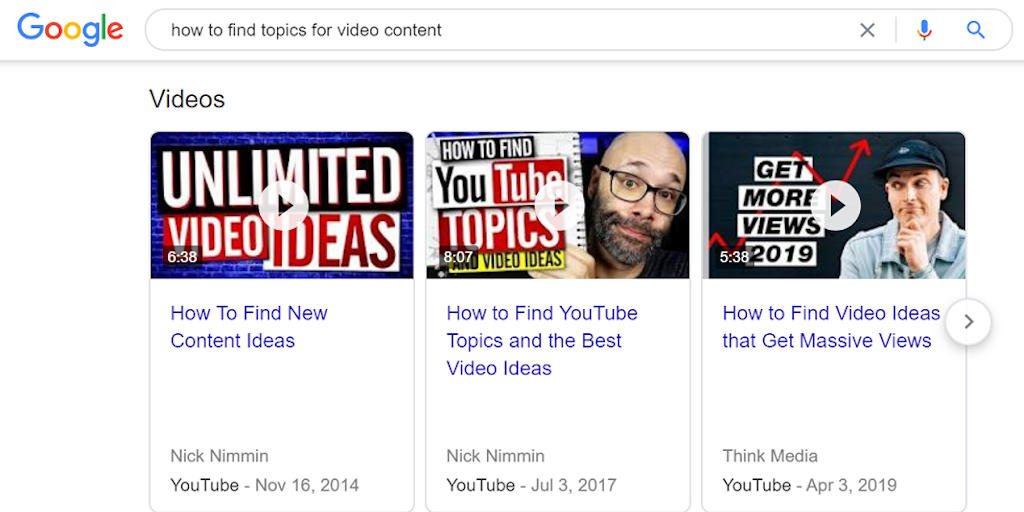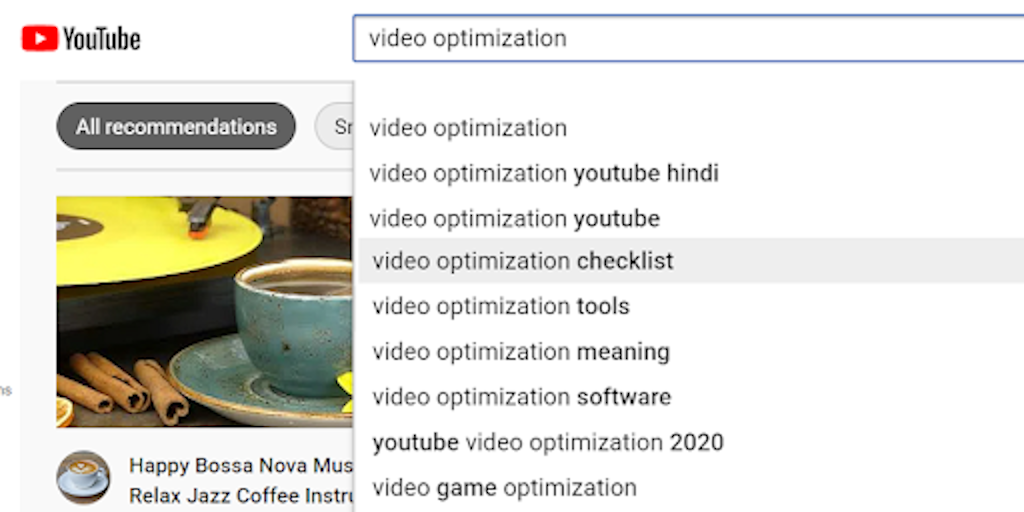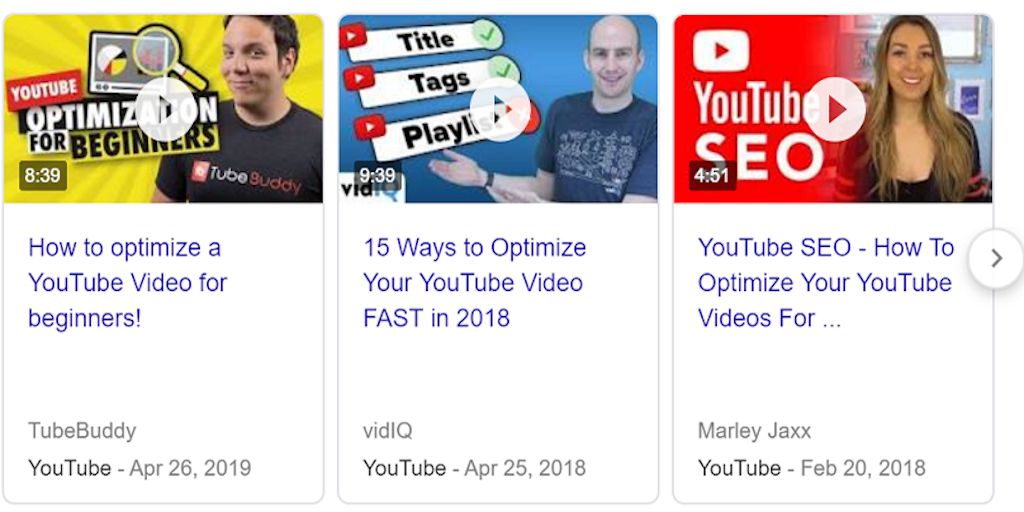
Lesley Vos is a content strategist at Bid4Papers, specializing in data research, copywriting, and content promotion. She has been published on Moz, CXL, Forbes, and more. Follow her on Twitter to read her latest articles.
The world’s demand for video content is enormous. It makes up 80% of all online traffic, and yet 53% of people want to see even more videos from brands they support!
In short, if you don’t consider video a part of your marketing plans, you’re missing a huge opportunity to grow. Not only does video content impact your brand’s authority, but it also can improve your traffic and overall search engine rankings by far.
But this is all easier said than done.
While producing and sharing a video might seem a great idea, you need to remember that it should complement your overall SEO and marketing strategy. After all, if you fail to organize and optimize your video content in the early stages, not only will it cost you a pretty sum, but it will be money spent in vain.
That’s why, in this guest post for Process Street, I’ll discuss video SEO marketing and optimization so your video content can achieve better rankings.
Just read through the following sections:
- What is video SEO?
- Planning your video content (with basic video SEO marketing practices)
- How to optimize video content for search and higher rankings
- Use Process Street for all your video and marketing needs!
Or, if you wanted to start working through an SEO checklist straight away, use this template.
Click here to get SEO Checklist: The Keyword Research Process!
Lights, camera, action,
What is video SEO?

Video SEO is the process of optimizing video content so that it can rank better on search engines for the keywords you’re targeting. The higher a link to a piece of video content is in search, the more clicks and viewers your content will get. This naturally results in more subscribers, likes, followers, or whatever else you want out of your audience.
Just as written content can be SEO-optimized to achieve that coveted number one spot on Google’s front page, video content can be for sites and search engines, too. In fact, pretty much everything on the web can be SEO-optimized — even apps in app stores!
The team at Techopedia go onto further explain video SEO, defining it as:
“Video SEO (vSEO) is the process of improving the ranking or visibility of a video in video search engines or search engines in general, allowing it to show up, preferably, on the first page of results. This process involves creating video metadata that is relevant to what people are searching for as well as building video content that generates traffic for a specific website.” – Techopedia, What is video SEO (vSEO)?
With the definition out of the way, let’s get to the nitty-gritty and start creating video content.
Planning your video content (with basic video SEO marketing practices)

First thing’s first: Before optimizing your video content, you need to plan what video you’re going to create, and undergo basic SEO practices such as keyword research.
This stage is the most challenging, time-sapping, and resource-consuming one. You won’t do it alone either, so make sure to organize and manage the team of responsible experts who’ll help you (this is easily done when using a collaborative checklist app, like Process Street).
Video SEO marketing tip #1: Specify your marketing goals
For video content to work, you need to know what you want to get out before you begin developing it.
This could include:
- Building more links and generating more social shares with videos.
- Helping you increase conversions.
With the former, you’ll need to focus on creating something truly exceptional: High-domain platforms won’t backlink to rubbish. Similarly, users won’t share mediocre content on social media.
Think of what you can offer to evoke the emotional response from viewers. You need videos that will make users laugh, amaze them, shock, educate, or perhaps even annoy them. By getting an emotional response, people will be more inclined to share the videos or write a personal post about them on their blogs, with a backlink to you.
Case in point: Dollar Shave Club.
The marketing world remembers it as one of the most viral videos that generated tons of high-quality backlinks. Thanks to its amusing concept and excellent PR strategy, the video appeared in hundreds of high-domain websites, including Forbes, TechCrunch, BusinessWeek, and Mashable.
Dollar Shave Club’s video attracted about 18,000 backlinks just one month after publishing. Years later, its number of referring domains continues to grow.
However, if you create videos to increase conversions, you’ll need to embed videos in landing pages and optimize them for Google snippets.
It’s a two-part process.
First, users see your video in snippets and get engaged. After that, they go to your landing page to learn more and, sooner or later, turn into customers. According to Wyzowl’s survey, 83% of marketers say video has helped them generate leads, and 80% admit that video has directly helped them increase sales.
Plus, embedding videos on your website will increase dwell time and impact your overall SEO metrics positively. (Did you know that adding a video to your website increases your chance to win SERP by 50 times?)
Depending on your marketing goal, and with all the above statistics in mind, you need to decide where you’ll use video.
Here are five solid avenues:
- The homepage of your website.
- A product page (according to Google, almost 50% of users check out product videos to make a purchase decision).
- Testimonials.
- A dedicated landing page.
- Off-site: YouTube, Vimeo, or other relevant video hostings. (About 90% of people discover new products by watching videos on YouTube.)
Video SEO marketing tip #2: Find potentially convertible topics for videos
Far from all videos can attract Google views. Your video may have millions of views on YouTube but bring zero traffic to your website.
To avoid such a situation, choose video topics that have traffic potential. These are topics with search intent (people look for them in Google) and those having video intent (topics that searchers would prefer to watch rather than read about).
If you see videos in the search results, it’s a sign that this topic has video intent.

Here’s how to find such topics:
- Look for relevant videos with lots of traffic for inspiration and understanding what people are searching in your niche.
- Consider Google Trends to find out what people are searching for.
- Try content explorers like Buzzsumo, Trendspottr, and Ahrefs.
- Check the keyword research feature of TubeBuddy, a YouTube-certified extension for video bloggers.
Video SEO marketing tip #3: Do video keyword research
Now, video content keyword research differs from text-based content keyword research.
Why?
Because most views don’t come from Google, but from YouTube suggesting videos to users. So, you need to optimize your videos for both Google and YouTube.
Also, people use Google and YouTube differently. It means that a keyword with tons of monthly traffic in Google may get zero on YouTube, and vice versa.
With all that information in mind, choose keywords for your videos accordingly.
Here are tips on how to do so:
- Use TubeBuddy: You can check all the tags your competitors use with their videos and choose the most relevant to add to yours.
- Consider YouTube Suggest: Type a keyword into the search field, and consider the exact phrases people use for searching. Use the most relevant for your videos.

If you or your team manage a YouTube channel, use its Studio for keyword research, too. Simply go to the Analytics page to see what keywords you are ranking for, and then use them to optimize your existing videos or create new videos for those keywords.
Video SEO marketing tip #4: Consider where the videos should be hosted
The best option would be to host videos on both your website and YouTube channels. It will help to get the full SEO potential of them.
This is because people will link back to your domain as the original video source. Plus, you can backlink to your website from different video hostings where you place videos (YouTube, Vimeo, etc).
Things to keep in mind:
- When adding video content to your website, make sure its loading speed allows that. As you know, page speed is a direct ranking factor — it makes Google crawl fewer pages at your website and increases the bounce rate when slow, so don’t allow it to hurt your SEO.
- Think of video types that will meet your marketing goals most – product videos, promos, and DIY explainer videos, these three are the most common way to increase your rankings and conversion rates.
My third SEO lesson here is to create videos with “suggested clips” in mind.
When writing a script for your video, ensure dividing it into clear and logical sections. It will help Google understand its content and show the most relevant clips from your video in snippets.
Avoid fluff between instructions, too. Say your target keywords in the video. Also, ensure that the audio is high-quality and precise: Use a good microphone and minimize background noises.
Lastly, try showing the relevant things on the screen as you tell viewers about them. It will help Google understand that your spoken text aligns with the content in your video.
How to optimize video content for search and higher rankings

Now that you’ve done some initial video SEO marketing basics and have created the video itself, it’s time for further optimization.
Your further video optimization to get more views from Google and increase organic traffic will be as follows…
Video SEO marketing tip #5: Craft a compelling video title
It should include your target keyword and be relevant yet intriguing enough so the audience would like to click on it.
But avoid clickbait!
In the short term, it will attract more clicks, yes. But YouTube will bury your video soon because of the audience rejection.
Video SEO marketing tip #6: Add an attention-grabbing description and tags
When posting your video to YouTube, make sure to provide a detailed, 200+ word description. It will help search engines understand the video’s topic to show it up as suggested content.
Optimize the description for your target keyword, and make sure it’s compelling enough to invite the audience to click. YouTube displays the first 125 characters of video descriptions to people, so it’s your chance to grab their attention and influence your CTR (for those who don’t know, click-through rate).
Also, remember tags. YouTube still asks for them, so choose 3-5 of the most relevant ones for your video, with one being your target keyword.
Check out what Hiver has done in this video:
Three primary keywords are included with the video’s title (with more longtails in the description) and Hiver has also started with a killer hook: What happens when your favorite candy store runs into a bit of trouble?
That makes this video a win for three reasons:
- Easily searchable with highly relevant keywords
- A description that lets you know what it’s about before you even click
- A bright, dynamic thumbnail that really makes you want to watch
Video SEO marketing tip #7: Choose a category for your video
This advice applies to YouTube channels again.
Once you’ve uploaded a video, go to Advanced Settings and choose the most relevant category for it. It’s a way to group it with similar content and help YouTube understand when to wind it up in playlists for more exposure.
Video SEO marketing tip #8: Upload your video transcript
Uploading your video transcript has a myriad of benefits.
Not only does it make your video more scannable for search engine bots, but it also makes it accessible to a broader audience.
Transcripts help YouTube understand a video’s topic and show it up in more suggested videos.
Video SEO marketing tip #9: Add an appealing thumbnail
A video thumbnail is what people see in search results, so it also plays a significant role in whether they want to click on it. In fact, videos with custom, appealing thumbnails can receive a 10% higher play rate.
So, create custom thumbnails that stand out. Avoid those that are visually dull and uninspiring, and focus on those enticing thumbnails that’ll grab the searcher’s attention.
When possible, create a thumbnail demonstrating that your video solves a user’s query. Also, add a descriptive text on your thumbnail. Make it short and complement the video title.
Color choice is important, too. Avoid white or gray as they blend in with search results. Use contrasting colors and easy-to-read fonts for texts on your thumbnails to look good at small sizes.

Video SEO marketing tip #10: Edit the closed captions
YouTube adds closed captions automatically, but the problem is that they are often full of misspellings and grammatical errors. But given that captions are one of the most powerful pieces of data for SEO, poor auto-generated captions can prevent your videos from showing up in search results.
And given that captions increase the watch rate, the fixed ones can positively influence your SEO rankings and engagement.
Video SEO marketing tip #11: Add key moments (timestamps)
When creating how-to videos with multiple steps or long videos like video conferences or documentaries, you might want to add key moments, aka timestamps, there.
It will help both viewers and search engines scan and find the most relevant sections of your video content.
Here are some tips for adding timestamps:
- Add them to the video description and don’t place them as a pinned comment.
- Keep them brief but descriptive, around 40 characters or less
- List timestamps in chronological order.
- Don’t add too many: Up to 10 will be fine, but make sure to label the most significant moments of the video.
- Align timestamps with the on-screen content.
Video SEO marketing tip #12: Optimize your whole page, not only a video
Seeing as Google has two tabs for videos — one for YouTube and another one for the organic results of pages with relevant embedded videos — why not integrate your related videos to your top-rated website pages?
It will increase your chances of getting those pages to show up in Google’s videos page as well, sending searchers to your website rather than YouTube.
For this trick to work, pages featuring videos must be relevant and optimized for SEO to ensure they rank as high as possible. Create high-quality content with E-A-T in mind, and remember your technical SEO components for better rankings.
Video SEO marketing tip #13: Make the video the focus of your page
For your video content to rank highly, don’t hide or place it below the fold on your page. Make it easy for both users and search crawlers to find, so format your page in a way that allows the video to be the central element.
Otherwise, users will have to scroll a lot to find your video, which leads to frustration and low play rates. Search crawlers also won’t index videos that are hard to find either, so all your video creation and promotion efforts won’t pay off.
Phew.
Those are all my tips for making sure your video content rises to the top of search engines.
If you’re releasing video content regularly, you’ll need to undergo this process again and again. To help ensure human error is reduced and that you always adhere to SEO best practices, you’ll want to follow a checklist.
Luckily for you, I’ve laid out the steps of a checklist you can follow below!
A checklist to create videos and help them convert

Let’s gather all the above information, tips, and tricks into one actionable checklist so that you could use it every time you work with video content for better rankings.
The checklist, then, would include these steps:
1.) Organize your video content creation process:
1.1) Specify your marketing goals (What do you want this content to bring?)
1.2) Find traffic potential topics for videos
1.3) Do video keyword research
2.) Create videos:
2.1) Choose video types that most align with your marketing goals
2.2) Make sure your website loading speed is OK for video content
2.3) Write video scripts with suggested clips in mind
3) Optimize your videos for search and higher rankings:
3.1) Write an intriguing video title with the target keyword in
3.2) Add a video description (around 200 words) and optimize it for your target keyword
3.3) Add 3-5 relevant tags
3.4) Choose a video category
3.5) Upload a video transcript
3.6) Add a custom thumbnail
3.7) Edit the closed captions
3.8) Add timestamps
3.9) Embed videos to your top-rated website pages
3.10) Make a video the focus of your page
To make these checklist steps followable and actionable on a repeated basis, all you need to do is sign up for a Process Street account.
Process Street is nifty business process management software that utilizes templates and checklists so that teams everywhere can do their best work possible.
Once you’ve signed up (you’ll get a 14-day free trial of their Standard plan), all you need to do is create a template, then copy and paste the above steps as tasks. Add information and form fields to the tasks, and you’ve got yourself a robust process for going about video SEO marketing in an optimized way.
Super useful, right?
In fact, Process Street is so useful for all things-process, why not utilize it for the rest of your video and marketing processes, too?
Use Process Street for all your video and marketing needs!
Process Street is superpowered checklists.
If you document workflows, business processes, and integral procedures as templates, you and your team can launch an infinite number of checklists to help you complete those important processes.
To familiarize yourself further and get started, watch the video below (which, yes, is SEO-optimized!)
Now, on top of creating the checklist I’ve laid out for you, you can also make checklist templates for all the other processes you undertake on a daily, weekly, or monthly basis.
If you’re stuck for inspiration, Process Street has hundreds of premade checklist templates to use, covering everything from onboarding to marketing processes. All you need to do is add them to your account and edit them to your unique needs!
For example, the following templates could be useful…
Video Content Approval Workflow Checklist Template
Click here to get the Video Content Approval Workflow Checklist Template!
SEO Checklist: The Keyword Research Process
Click here to get SEO Checklist: The Keyword Research Process!
Content Promotion Checklist
Click here to get the Content Promotion Checklist!
For more where those came from, don’t forget to check out their entire checklist template library.
What makes these checklist templates – and any ones you create – superpowered is the workflow automation features that can be added.
These include (but aren’t limited to):
- Stop tasks ✋
- Conditional logic
- Dynamic due dates ⏱
- Task permissions
- Task assignments
- Role assignments
- Embed widget
- Webhooks
- Approvals ✅
- And much, much more!
To deep dive into one the niftiest features of all – approvals – check out the video below.
There you have it.
With my advice on video SEO marketing, optimizing your video content, and Process Street’s free checklist templates, I can’t wait to see your video content appearing at the top of search!
Have you created and optimized videos to get higher rankings in search? What pitfalls did you face, if any? Are there any tricks you have on video optimization? Share your thoughts below.







 Workflows
Workflows Projects
Projects Data Sets
Data Sets Forms
Forms Pages
Pages Automations
Automations Analytics
Analytics Apps
Apps Integrations
Integrations
 Property management
Property management
 Human resources
Human resources
 Customer management
Customer management
 Information technology
Information technology



Thom James Carter
Thom is one of Process Street’s content writers. He’s also contributed tech-related writing to The New Statesman, Insider, Atlassian, G2, The Content Marketing Institute, and more. Follow him on Twitter @thomjamescarter.